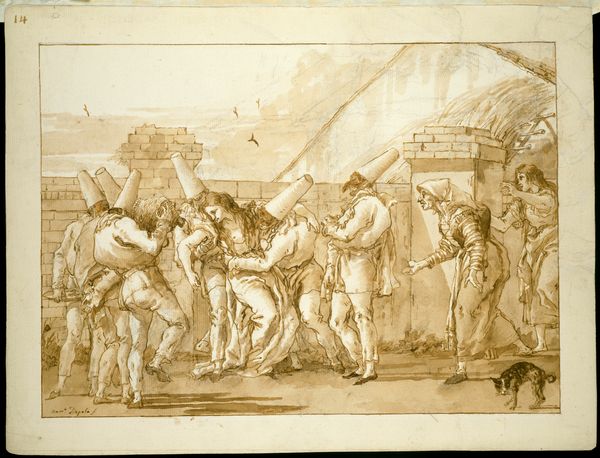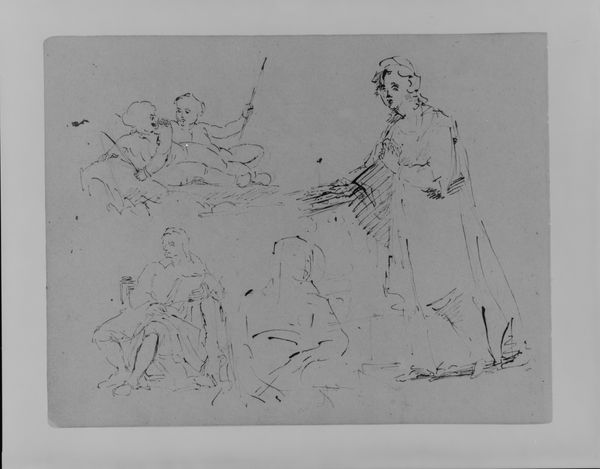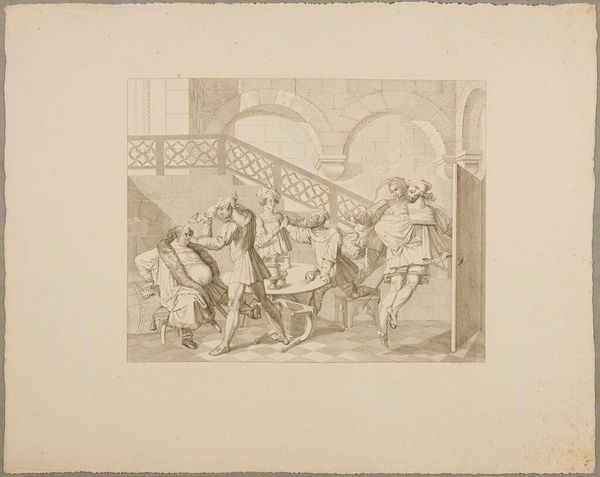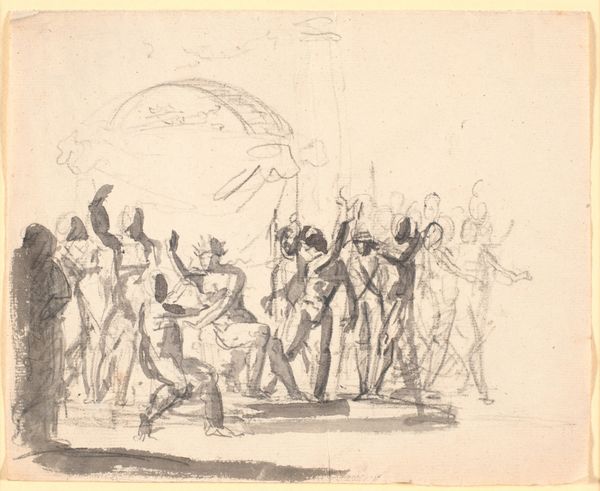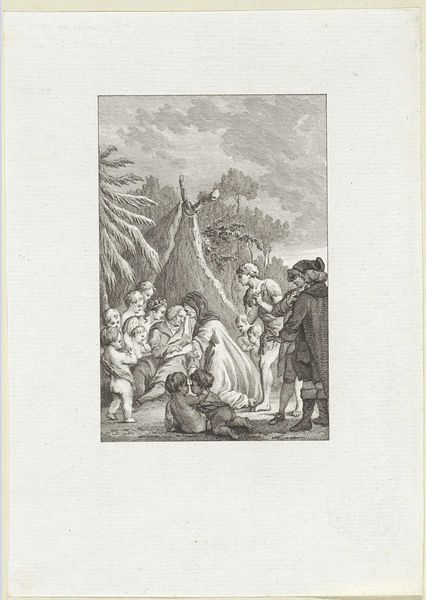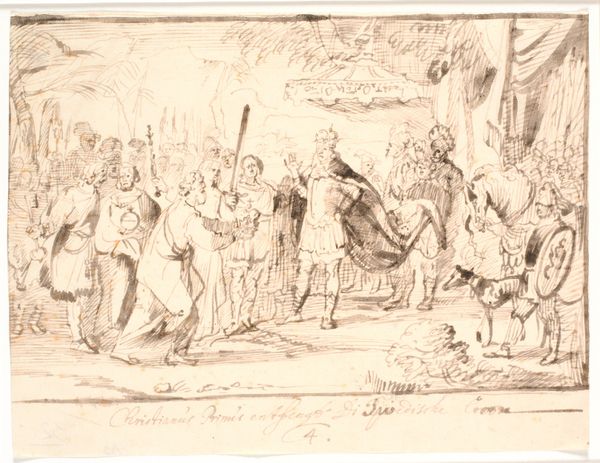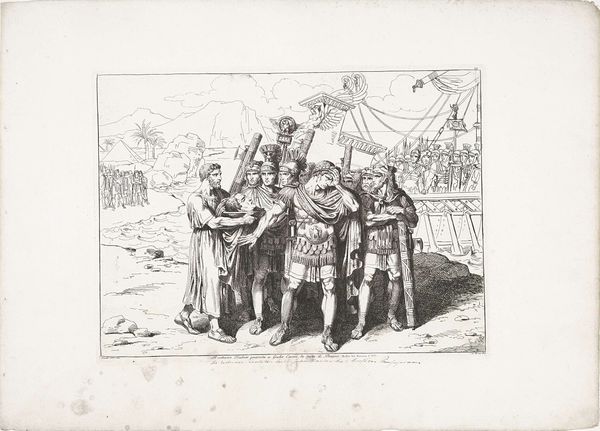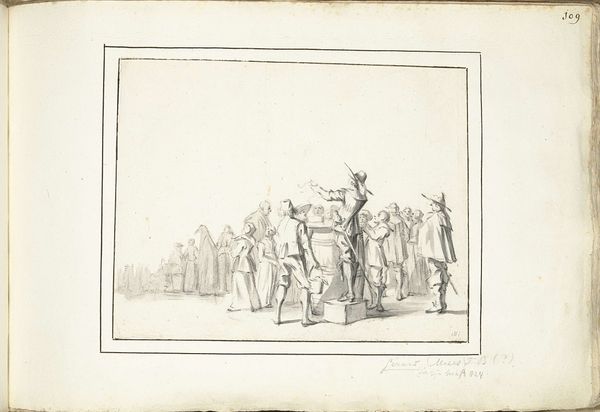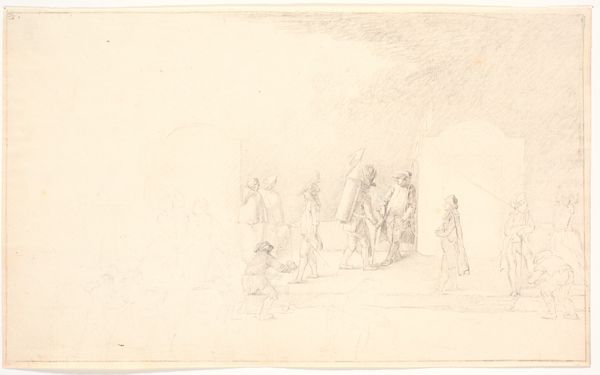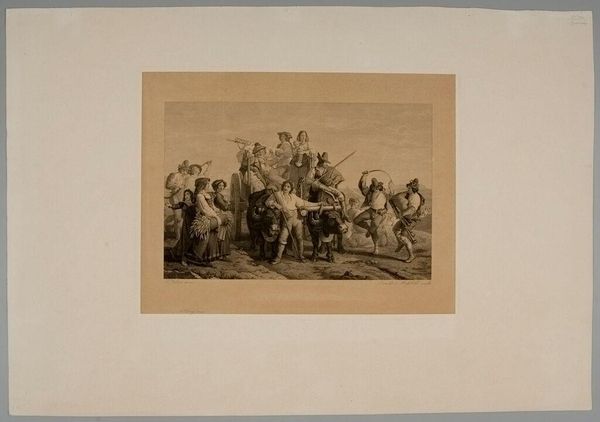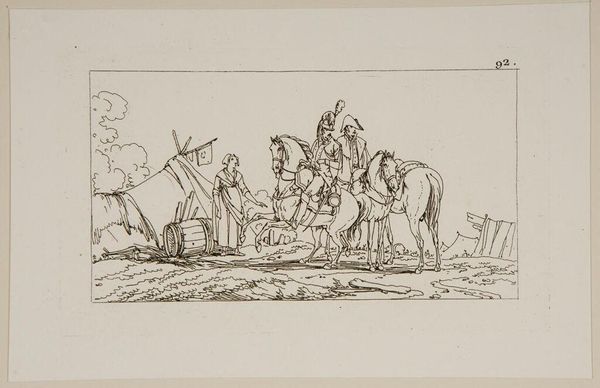
Study for Treaty with Native Americans (from Sketchbook) 1857 - 1860
0:00
0:00
drawing, paper, ink, pencil
#
portrait
#
drawing
#
ink drawing
#
narrative-art
#
pen drawing
#
pen illustration
#
pen sketch
#
pencil sketch
#
figuration
#
paper
#
ink
#
pen-ink sketch
#
pencil
#
line
#
pencil art
Dimensions: 2 13/16 × 4 3/8 in. (7.1 × 11.1 cm)
Copyright: Public Domain
Curator: Here we have John Quincy Adams Ward’s "Study for Treaty with Native Americans," an ink and pencil drawing from the late 1850s. It's so immediate. What strikes you most about it? Editor: Well, knowing it's a study, it feels like a really raw and honest document. You see the artist grappling with the scene, almost like he’s working out a problem, with all these layered lines showing the creative process itself. How might the materials themselves influenced Ward's process? Curator: Exactly! The accessibility and relative cheapness of pencil and ink meant he could produce a number of these preparatory studies, iterating rapidly. That immediacy you noted is, in part, a product of these materials facilitating quick mark-making and easy revisions. Consider too, the labor involved. Was it a solitary pursuit, a craftsman's endeavor to fulfill a commission? Who was the likely audience for these materials and studies? Editor: I see what you mean! I hadn't thought about the *process* of making sketches, just the image itself. Was this typical for creating images depicting indigenous people at that time? Curator: Think about the dominant modes of artistic production. Academic art training emphasized drawing and sketching as fundamental to developing a finished artwork. Ward, in choosing readily available, portable media, aligns himself with the sketching tradition popular at the time, allowing for relatively inexpensive means to create representations, even problematic ones. Do you consider this sketch “high art?" If not, where does it fall? Editor: I guess that depends on your definition of "high art"! It does make me think about how readily available art supplies are today and how different that is from then. So, by considering process and material, we see this not just as a representation, but as a cultural artifact tied to its time. Curator: Precisely. It offers insight into artistic production and consumption of images in the mid-19th century, blurring any neat separation between fine art and craft, in the complex social context surrounding representations of Native Americans. Editor: This definitely shifts my understanding of the artwork. I'm leaving with so much more than just an impression. I’ll look at other works through this perspective from now on.
Comments
No comments
Be the first to comment and join the conversation on the ultimate creative platform.

